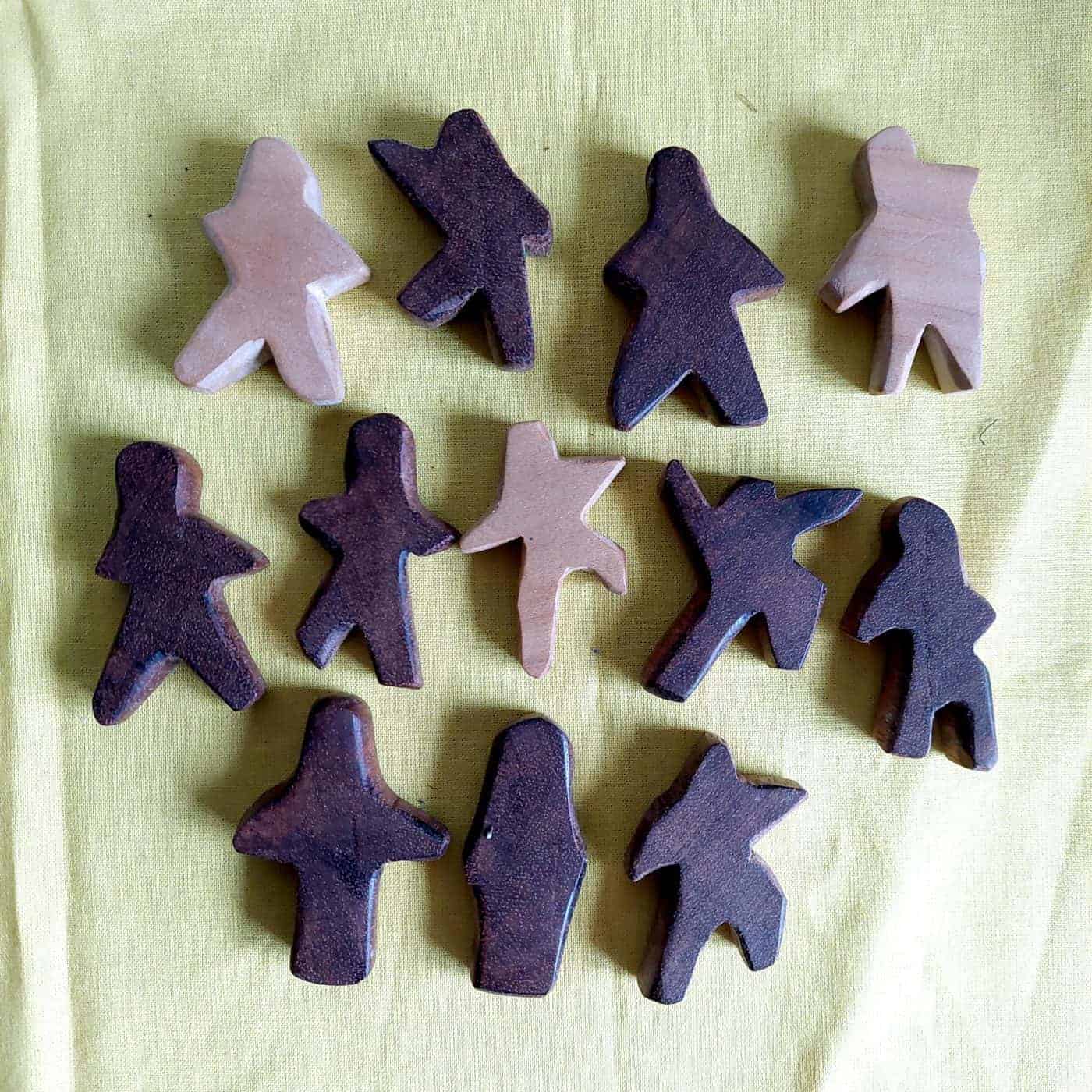Meet children at their level
I’m a big fan of using toys to tell Bible stories. Since the Easter story is one of the hardest to share with children, using toys is one way we can make it more accessible.

One of the great things about using toys instead of a book is that you get to tell the story in a way which is most appropriate for the children you are sharing it with. This will depend on many factors including:
- their age
- their experience of Bible stories and especially the Easter story
- your relationship with them (are you their parent or grandparent or a friend or pastor?
- what you feel they need to hear about the meaning of Jesus’ death and resurrection
The great thing about using toys, is that play is the natural language of all children, so by placing this important story into their language, we are making it really accessible for them. The danger is that we get too involved and try to control the way they use the toys, which can remove the opportunity for them to explore and discover more of Jesus for themselves. You can read more about how play is helpful in growing faith at home here.
How can I use toys to tell the Easter story?
Here are some ideas:
- Read the story yourself from the Bible and make a shortened, simpler version of it to tell. You could create a storyboard (like this one in the Easter Puppets book) or write short notes to remind you of each section of the story. Once you have your story, tell it in your own words using the toys to ‘act’ the story.
- Listen to the story from an audio Bible, using the toys to ‘act’ the story. This has the advantage of having actual Bible text, which is great for children to hear, but the Easter story is quite long and complex, especially for young children. You could always use one section of the story from an audio Bible, but give a quick intro to what happened before that section of the story starts.
- Set up a story set using clothes and bricks. For the Easter story, you might want to set up a table area for the last supper, a garden area for Jesus’ arrest, a hill for his death and a garden tomb area. Don’t worry about realism – children are experts at imagination – instead, you could set out four different pieces of cloth and ask them what they would add to each area as props to make them into each scene. You can then use small world play figures or wooden peg dolls as the people to ‘act’ the story. Keep it simple, using each scene as a guide to help you move the story along. This can also be made from play dough or soil as an Easter garden with four ‘rooms’ for the table, the garden, the hill and the tomb. Leaving this play area up after telling the story allows children to continue to play – this is a key way children develop their own understanding and theology. They might add other elements to the story scene to help them make connections with their own lives and this story. This is a very healthy way to develop a personal connection with the Jesus story.
- Set up a play area with an Easter storybook and toys which could be used to tell the Easter story.
What toys can I use to tell the Easter story?
Here are three types of toys you can use:
1. Toys made specifically to tell the Easter story
Things to buy:
- This is a stunning carved wooden Easter set
- This is a cheaper version
- These are beautiful painted wooden peg dolls and you can buy a whole set or a single figure
Things to make:
- This set of Easter Puppets comes with a storyboard and sticks to make them plus there’s a download version
- Here’s a set you can download and make your own Easter set from card
- Here’s a set to me your own felt Easter story set
- Here are details for you to make your own set of Resurrection Eggs, where each egg contains an item linking to one part of the Easter story
2. Toys which are generic and therefore can be used to tell many stories
The People of God Godly Play materials are designed to tell other Bible stories and can be used to tell the Easter story
You could use simple wooden peg dolls like these, either left blank or add faces and hair
Vintage Play Mobil, where the characters don’t have specific roles, are really useful for telling all sorts of stories, and can often be bought second-hand on Ebay, Etsy and Facebook Marketplace as well as specific selling groups such as Playmobil Anonymous
These wooden toys can be used to create all sorts of different backdrops such as a table and a tomb
3. Non-Easter story toys which can be given Easter story roles
This list is endless! You could use:
- Shopkins
- Duplo/Lego people
- soft toys
- bath toys
- cars and trucks
- dinos
- dolls
- whatever you have to hand!
Whichever you choose, make sure you have space to leave the toys out for children to play after you’ve shared the story as this is when the real work happens!
